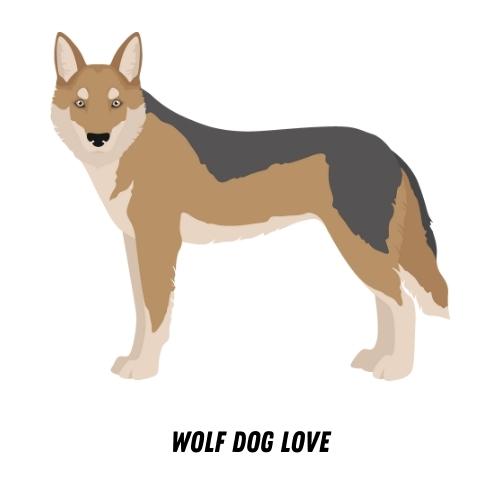As a pet lover, you may be wondering if a wolf-dog can live in hot weather. The answer is yes! Wolf dogs are quite adaptable to different climates. However, there are a few things you should keep in mind if you’re considering owning one of these beautiful animals.
Can a wolf survive in the heat?
Wolves are resilient animals and have adapted to a range of habitats across the world, but whether they can survive in hot climates is not as clear-cut. While scientists claim that wolves have successfully adjusted to warmer climates such as Texas and Arizona, the presence of packs in these regions remains sparse.
Extreme heat is thought to be stressful for wolves, causing exhaustion from dehydration and leading to an inability to obtain enough food or rest. Hence, despite their ability to tolerate some heat, even thriving in temperate seasons, their overall survival depends on their access to cool areas and shelter from scorching conditions.
Can dogs tolerate hot weather?
With summer upon us, dog owners are concerned if their canine companions can handle the hot weather, especially when it comes to spending long hours outside.
It’s important to never leave your pup in a parked car for any length of time, as the temperature can rise quickly and become unsafe for your pet. If you’re planning on taking them along with you on an outdoor excursion, always provide plenty of shade and access to cool water.
For pups who have trouble tolerating heat in general, it’s best to keep their exercise sessions brief and filled with plenty of breaks. With a few precautions, dogs can safely enjoy summers without worry!
Can Arctic wolves live in heat?
Arctic wolves are built and designed for the coldest temperatures of their natural habitat, the snowy arctic. Challenging a wolf to live in hot and dry climates would no doubt prove too much for them.
Arctic wolves have a unique double coat of fur that endures frigid temperatures while keeping them warm, but the same hair follicles become almost useless in heat because they aren’t able to let out heat like other species.
Moving an Arctic wolf away from its home turf could also present difficulties with finding food and water as it might not be accustomed to a different type of environment or wildlife. Although determined hearts may try, it’s probably best if you don’t attempt to introduce an Arctic wolf with hot climates.
What is the best temperature for wolves?
Wolves, like many other animals, have a natural preference for temperatures that can both protect them and promote their overall health.
As a species adapted to cold climates, they typically thrive in temperatures between -50°C and 20°C. When it comes to the best temperature, anything above freezing and below 15°C is usually ideal. Wolves are also quite active and need colder temperatures to be able to easily move around.
So while they may take refuge from extreme cold in warmer areas, the best temperature environment for wolves is one that provides just enough chill so they can hunt and play without getting too hot or too cold.
Do wolves prefer hot or cold?
Wolves are incredibly adaptable, so they don’t necessarily have a preference when it comes to the temperature of their environment. Wolves can survive in climates ranging from Arctic tundra to tropical rainforest – and everything in between! However, most wolves tend to prefer living in cool or cold conditions since their thick fur offers protection from the cold and keeps them warm in lower temperatures.
But there are exceptions; for instance, some species of wolves have adapted to live and thrive in hotter climes. So it seems that ultimately, the answer is that wolves don’t have a fixed preference for hot or cold – but instead take advantage of whatever temperature suits them best at any given moment.
What temp Can wolves survive?
Wolves can’t stand the heat! They are built to thrive in cold climates, with a thick coat of fur that helps them survive temperatures as low as -40°F or lower. But, even though they don’t enjoy hot and humid weather, wolves have adapted to live in temperate climates when given the chance.
Their thicker winter coats tend to shed during warmer months to reduce their body heat. That being said, wolves will typically stay away from anything higher than 77°F and won’t wander into areas where temperatures are too high for long periods. So if you ever encounter one in warmer climates – don’t worry! He’s likely just passing through.
Wrapping Up
In conclusion, wolves and dogs are amazingly resilient animals despite their differences, but it’s important to consider the environment when deciding whether or not to bring a wolf dog into your home and care for it. Generally, wolf dogs fare better in cooler climates as they are accustomed to cold, damp weather –places like Northern Europe and Canada.
That being said, with the right resources, such as air conditioning and ample shade during hot days outside, wolf dogs can survive in warm environments provided they are well cared for. With that in mind, we can have hope that these hybrid dogs will continue to be seen out in public more often— a unique reminder of nature’s complexity.








